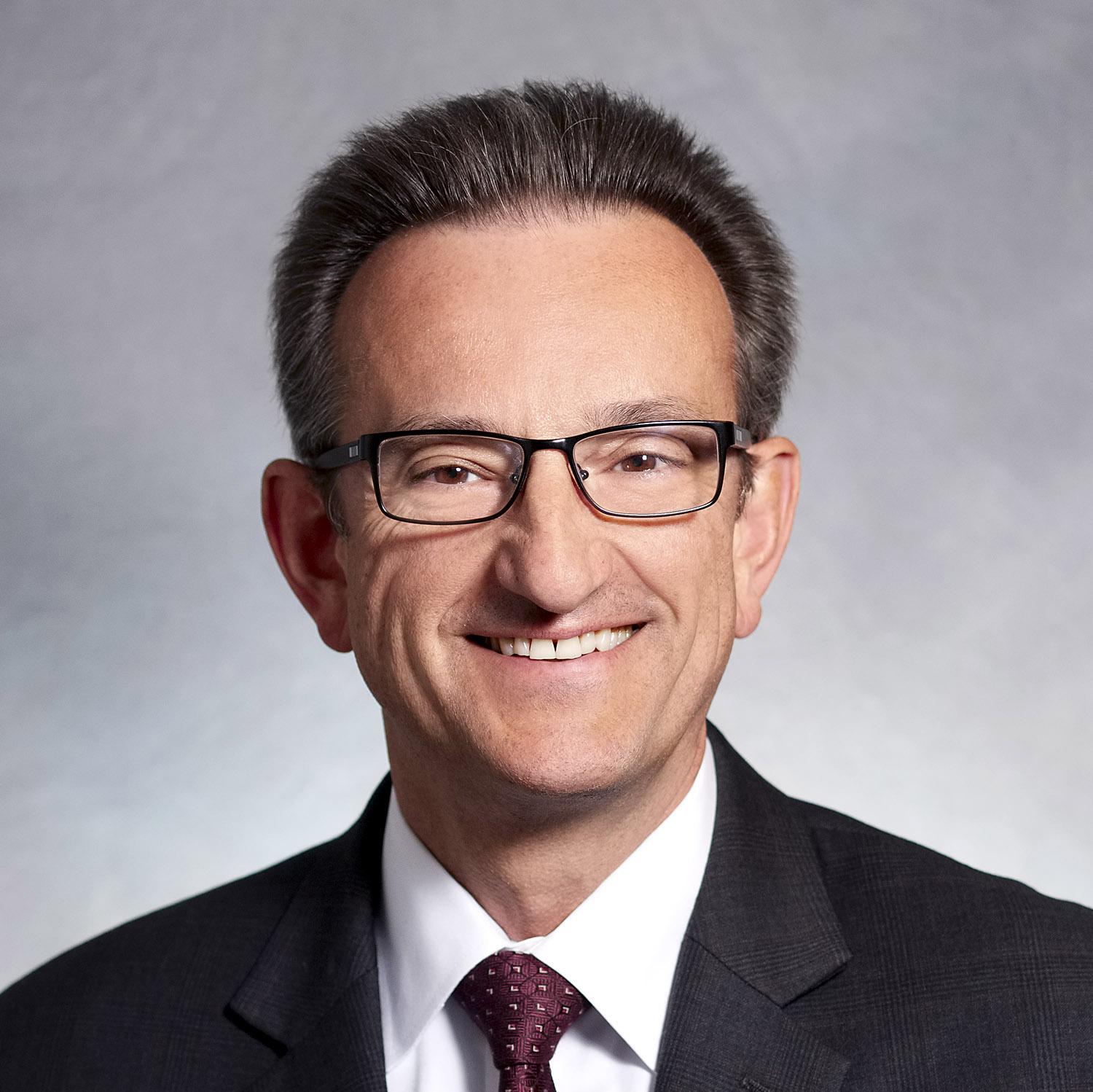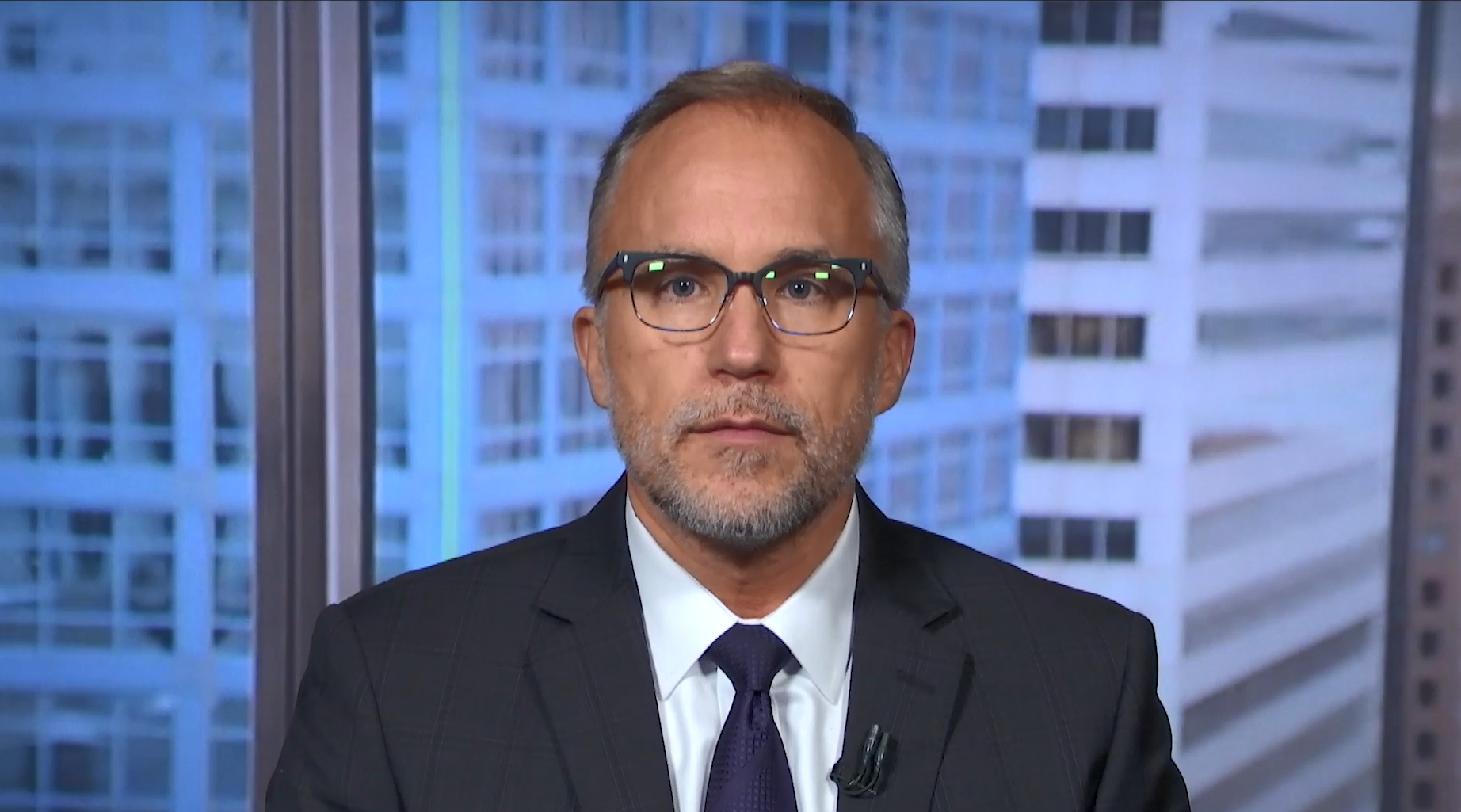
Outbreak Reaching a Peak in US & Canada
-
bookmark
-
print

- Keywords:
- covid-19


Financial markets continued their volatility and COVID-19 cases neared two million worldwide as Brian Belski, Chief Investment Strategist at BMO Capital Markets, moderated a roundtable discussion with BMO experts to discuss the latest developments in the outbreak. Joining him on the call were Michael Gregory, Deputy Chief Economist and Jon Hill![]() , Vice President of U.S. Rates Strategy. Special guest Dr. John Whyte
, Vice President of U.S. Rates Strategy. Special guest Dr. John Whyte![]() , Chief Medical Officer of WebMD, joined the call to discuss the week’s most recent medical developments.
, Chief Medical Officer of WebMD, joined the call to discuss the week’s most recent medical developments.
Listen to the full conversation here, or read the content below that describes what is in the podcast.
Dr. Whyte opened the call, to say that after weeks of building infection and fatality rates in North America, the evidence suggests that the COVID-19 outbreak is reaching its peak in Canada and the United States, as social and physical distancing measures have an impact.
“We most likely have reached our peak in many regions in North America,” he said, saying even less densely populated regions appear to be nearing a plateau in the number of cases in Canada and the United States, allowing officials in both countries to start thinking about how to slowly reopen their economies.
“We are starting to see light at the end of the tunnel,” he said. “I think this is the first time that I have started to feel that we are getting to that point.”
Economic Outlook
BMO Capital Markets Deputy Chief Economist Michael Gregory opened his remarks by noting that while talk of reopening the economy has begun amid signs that the rate of infection is stabilizing, that’s not the same as a meaningful decrease in the number of cases.
“It's the latter that's going to herald at least a graduated reopening of the economy,” he said, which will likely be in mid-May at the earliest.
In the meantime, economic indicators around the impact of COVID-19 in Canada and the United States continue to paint a dismal picture, including employment figures that in March plummeted by approximately one million in Canada, marking the biggest drop since they began keeping records in 1976 and raising the unemployment rate from 5.6 percent to 7.8 percent. Gregory said that number will nearly double in April, to about 14 percent, before beginning to ebb.
Aggregate hours worked in March were even more damning, he said, decreasing by 15 percent in March, month-on-month and pointing to a huge decline in GDP. Statistics Canada plans to release figures for both March GDP and first-quarter GDP just two weeks after the end of the period, rather than the traditional two-month waiting period, in order to give a more accurate picture of how much the Canadian economy is currently being impacted by the coronavirus.
In the United States, the latest three weeks have seen 16.8 million Americans apply for unemployment insurance benefits, with household employment falling by nearly 3 million by mid last month. Gregory said the unemployment rate hit 4.4 percent in March, and “we're looking for the unemployment rate in the US to hit 13% come April.”
Similarly, US retail sales are projected to slip 9 percent, month on month, marking the worst reading since the government started tracking the numbers in 1967. As well, industrial production will fall 4.3 percent, which Gregory noted matched the worst pace of decline of the Great Recession.
The IMF View
The International Monetary Fund recently came out with their latest view on the impact of the pandemic, and Gregory said it was telling, “simply because the IMF tends to be a little bit more optimistic about economic growth, generally.” They’re expecting the global economy to contract by 3 percent, which is worse than the Great Recession and the worst since the Great Depression.
The IMF is looking for the global economy to rebound 5.8 percent next year, led by emerging and developing markets. In contrast, the IMF doesn’t expect a full recovery in advanced economies in the same period. The United States, for example, will see a 5.9 percent decline over the year, with only a 4.7 percent rebound in 2021.
Gregory contrasted the IMF’s views with his: “Where we're very different is of course in the depth of that downturn, but also the robustness of the rebound.” He went on to explain that the stimulus packages in place in both Canada and the United States are designed to make the rebound as robust as possible, and more measures are likely coming from both governments.
Shape of the Recovery
The shape of the eventual recovery is still in question, Gregory said. “The extent to which we do get a recovery is in part a function of how long we stay closed for," he said, "and in part a function of the amount of stimulus, and the amount of measures that governments and central banks put in place.”
He placed the recovery somewhere between a U and a V, seeing a return to where the economy was before the pandemic sometime in the next year. Recovery rates will look stellar, he said, but it will take quite a bit longer to get back to the old levels of activity, like full airplanes, arenas, concert halls and cruise ships.
Aggressive Fed Response
Jon Hill, Vice President of U.S. Rates Strategy at BMO Capital Markets, joined the call to speak about the extent of the Federal Reserve Bank’s response. “One way that I've been trying to characterize the Fed responses is by different playbooks,” he said.
Two months ago, the response was for the Federal Reserve to cut rates to zero, deploy forward guidance that rates would stay there for an extended period, and launch a quantitative easing program. The next level was to relaunch several programs from the 2008 crisis-era designed to improve market functioning or improve bridge financing to distressed assets.
“What's new this time around,” Hill said, “is because the scale of this shock is so unforeseen, and particularly unprecedented, the scale of the monetary response needs to be similarly aggressive.”
More Tools in its Toolbox
Hill said he believed the Federal Reserve still has ammunition to move the recovery forward. “This could range from an expanded municipal bond-buying program to something that would be kind of akin to yield curve control,” he said.
He added that interest rates will likely stay low for an extended period, “and the central bank is going to be in absolutely no rush to pull back a lot of their stimulus.”
Market Bottom
BMO Capital Markets Chief Investment Strategist Brian Belski said North American markets have likely touched their lows as a result of the outbreak, buoyed by news that the rate of infection and mortality is stabilizing in the United States and Canada.
On March 23rd, Mr. Belski and his team published a report on the outlook for US and Canadian markets, forecasting that a rebound, when it occurs, will see equities rally 40-50 percent with respect to lows touched during the pandemic.
“We are in an unprecedented time, there is no template for what's happening right now,” he said, saying it’s been more behavioral science, psychology and health issues, rather than fundamentals, which have been driving markets in recent weeks.
“Now that we're starting to see less negative news, we're starting to transition back into doing what we're good at (as economists, investors and strategists), analyzing data,” Mr. Belski said. “The market is beginning to work through those things. That's why we believe the market has begun to rally.”
He predicted the unprecedented down days felt by markets in recent weeks will mean equally unprecedented up days when the recovery begins.
Not another 2008/09
Turning to the banking sector, Mr. Belski said the current crisis and its impact on banks cannot be compared to the Global Financial Crisis of 2008/09.
Big banks today, he said, stand out for their balance sheet strength, very strong capital measures and discipline relative to 2008 and 2009.
“We would say categorically, ‘No, this is not 2008-2009’ in terms of the bank condition,” he said, underscoring that US and Canadian banks are far better capitalized today than they were during the market meltdown of more than a decade ago.
Brian is the Chief Investment Strategist and leader of the Investment Strategy Group, provides strategic investment and portfolio management advice to both institut…(..)
View Full Profile >
Michael Gregory, CFA
Deputy Chief Economist & Managing Director
800-613-0205
Michael is part of the team responsible for forecasting and analyzing the North American economy and financial markets. He has spent his career working in either ec…(..)
View Full Profile >Financial markets continued their volatility and COVID-19 cases neared two million worldwide as Brian Belski, Chief Investment Strategist at BMO Capital Markets, moderated a roundtable discussion with BMO experts to discuss the latest developments in the outbreak. Joining him on the call were Michael Gregory, Deputy Chief Economist and Jon Hill![]() , Vice President of U.S. Rates Strategy. Special guest Dr. John Whyte
, Vice President of U.S. Rates Strategy. Special guest Dr. John Whyte![]() , Chief Medical Officer of WebMD, joined the call to discuss the week’s most recent medical developments.
, Chief Medical Officer of WebMD, joined the call to discuss the week’s most recent medical developments.
Listen to the full conversation here, or read the content below that describes what is in the podcast.
Dr. Whyte opened the call, to say that after weeks of building infection and fatality rates in North America, the evidence suggests that the COVID-19 outbreak is reaching its peak in Canada and the United States, as social and physical distancing measures have an impact.
“We most likely have reached our peak in many regions in North America,” he said, saying even less densely populated regions appear to be nearing a plateau in the number of cases in Canada and the United States, allowing officials in both countries to start thinking about how to slowly reopen their economies.
“We are starting to see light at the end of the tunnel,” he said. “I think this is the first time that I have started to feel that we are getting to that point.”
Economic Outlook
BMO Capital Markets Deputy Chief Economist Michael Gregory opened his remarks by noting that while talk of reopening the economy has begun amid signs that the rate of infection is stabilizing, that’s not the same as a meaningful decrease in the number of cases.
“It's the latter that's going to herald at least a graduated reopening of the economy,” he said, which will likely be in mid-May at the earliest.
In the meantime, economic indicators around the impact of COVID-19 in Canada and the United States continue to paint a dismal picture, including employment figures that in March plummeted by approximately one million in Canada, marking the biggest drop since they began keeping records in 1976 and raising the unemployment rate from 5.6 percent to 7.8 percent. Gregory said that number will nearly double in April, to about 14 percent, before beginning to ebb.
Aggregate hours worked in March were even more damning, he said, decreasing by 15 percent in March, month-on-month and pointing to a huge decline in GDP. Statistics Canada plans to release figures for both March GDP and first-quarter GDP just two weeks after the end of the period, rather than the traditional two-month waiting period, in order to give a more accurate picture of how much the Canadian economy is currently being impacted by the coronavirus.
In the United States, the latest three weeks have seen 16.8 million Americans apply for unemployment insurance benefits, with household employment falling by nearly 3 million by mid last month. Gregory said the unemployment rate hit 4.4 percent in March, and “we're looking for the unemployment rate in the US to hit 13% come April.”
Similarly, US retail sales are projected to slip 9 percent, month on month, marking the worst reading since the government started tracking the numbers in 1967. As well, industrial production will fall 4.3 percent, which Gregory noted matched the worst pace of decline of the Great Recession.
The IMF View
The International Monetary Fund recently came out with their latest view on the impact of the pandemic, and Gregory said it was telling, “simply because the IMF tends to be a little bit more optimistic about economic growth, generally.” They’re expecting the global economy to contract by 3 percent, which is worse than the Great Recession and the worst since the Great Depression.
The IMF is looking for the global economy to rebound 5.8 percent next year, led by emerging and developing markets. In contrast, the IMF doesn’t expect a full recovery in advanced economies in the same period. The United States, for example, will see a 5.9 percent decline over the year, with only a 4.7 percent rebound in 2021.
Gregory contrasted the IMF’s views with his: “Where we're very different is of course in the depth of that downturn, but also the robustness of the rebound.” He went on to explain that the stimulus packages in place in both Canada and the United States are designed to make the rebound as robust as possible, and more measures are likely coming from both governments.
Shape of the Recovery
The shape of the eventual recovery is still in question, Gregory said. “The extent to which we do get a recovery is in part a function of how long we stay closed for," he said, "and in part a function of the amount of stimulus, and the amount of measures that governments and central banks put in place.”
He placed the recovery somewhere between a U and a V, seeing a return to where the economy was before the pandemic sometime in the next year. Recovery rates will look stellar, he said, but it will take quite a bit longer to get back to the old levels of activity, like full airplanes, arenas, concert halls and cruise ships.
Aggressive Fed Response
Jon Hill, Vice President of U.S. Rates Strategy at BMO Capital Markets, joined the call to speak about the extent of the Federal Reserve Bank’s response. “One way that I've been trying to characterize the Fed responses is by different playbooks,” he said.
Two months ago, the response was for the Federal Reserve to cut rates to zero, deploy forward guidance that rates would stay there for an extended period, and launch a quantitative easing program. The next level was to relaunch several programs from the 2008 crisis-era designed to improve market functioning or improve bridge financing to distressed assets.
“What's new this time around,” Hill said, “is because the scale of this shock is so unforeseen, and particularly unprecedented, the scale of the monetary response needs to be similarly aggressive.”
More Tools in its Toolbox
Hill said he believed the Federal Reserve still has ammunition to move the recovery forward. “This could range from an expanded municipal bond-buying program to something that would be kind of akin to yield curve control,” he said.
He added that interest rates will likely stay low for an extended period, “and the central bank is going to be in absolutely no rush to pull back a lot of their stimulus.”
Market Bottom
BMO Capital Markets Chief Investment Strategist Brian Belski said North American markets have likely touched their lows as a result of the outbreak, buoyed by news that the rate of infection and mortality is stabilizing in the United States and Canada.
On March 23rd, Mr. Belski and his team published a report on the outlook for US and Canadian markets, forecasting that a rebound, when it occurs, will see equities rally 40-50 percent with respect to lows touched during the pandemic.
“We are in an unprecedented time, there is no template for what's happening right now,” he said, saying it’s been more behavioral science, psychology and health issues, rather than fundamentals, which have been driving markets in recent weeks.
“Now that we're starting to see less negative news, we're starting to transition back into doing what we're good at (as economists, investors and strategists), analyzing data,” Mr. Belski said. “The market is beginning to work through those things. That's why we believe the market has begun to rally.”
He predicted the unprecedented down days felt by markets in recent weeks will mean equally unprecedented up days when the recovery begins.
Not another 2008/09
Turning to the banking sector, Mr. Belski said the current crisis and its impact on banks cannot be compared to the Global Financial Crisis of 2008/09.
Big banks today, he said, stand out for their balance sheet strength, very strong capital measures and discipline relative to 2008 and 2009.
“We would say categorically, ‘No, this is not 2008-2009’ in terms of the bank condition,” he said, underscoring that US and Canadian banks are far better capitalized today than they were during the market meltdown of more than a decade ago.
What to Read Next.
North American Investment Strategy: 2021 Market Outlook
Brian Belski | December 16, 2020 | Economic Insights

While 2020 has been a challenging year, it’s also highlighted our resilience and determination. Those qualities were evident in the U.S. stock …
Continue Reading>More Insights
Tell us three simple things to
customize your experience.






Contact Us
Banking products are subject to approval and are provided in the United States by BMO Bank N.A. Member FDIC. BMO Commercial Bank is a trade name used in the United States by BMO Bank N.A. Member FDIC. BMO Sponsor Finance is a trade name used by BMO Financial Corp. and its affiliates.
Please note important disclosures for content produced by BMO Capital Markets. BMO Capital Markets Regulatory | BMOCMC Fixed Income Commentary Disclosure | BMOCMC FICC Macro Strategy Commentary Disclosure | Research Disclosure Statements.
BMO Capital Markets is a trade name used by BMO Financial Group for the wholesale banking businesses of Bank of Montreal, BMO Bank N.A. (member FDIC), Bank of Montreal Europe p.l.c., and Bank of Montreal (China) Co. Ltd, the institutional broker dealer business of BMO Capital Markets Corp. (Member FINRA and SIPC) and the agency broker dealer business of Clearpool Execution Services, LLC (Member FINRA and SIPC) in the U.S. , and the institutional broker dealer businesses of BMO Nesbitt Burns Inc. (Member Canadian Investment Regulatory Organization and Member Canadian Investor Protection Fund) in Canada and Asia, Bank of Montreal Europe p.l.c. (authorised and regulated by the Central Bank of Ireland) in Europe and BMO Capital Markets Limited (authorised and regulated by the Financial Conduct Authority) in the UK and Australia and carbon credit origination, sustainability advisory services and environmental solutions provided by Bank of Montreal, BMO Radicle Inc., and Carbon Farmers Australia Pty Ltd. (ACN 136 799 221 AFSL 430135) in Australia. "Nesbitt Burns" is a registered trademark of BMO Nesbitt Burns Inc, used under license. "BMO Capital Markets" is a trademark of Bank of Montreal, used under license. "BMO (M-Bar roundel symbol)" is a registered trademark of Bank of Montreal, used under license.
® Registered trademark of Bank of Montreal in the United States, Canada and elsewhere.
™ Trademark of Bank of Montreal in the United States and Canada.
The material contained in articles posted on this website is intended as a general market commentary. The opinions, estimates and projections, if any, contained in these articles are those of the authors and may differ from those of other BMO Commercial Bank employees and affiliates. BMO Commercial Bank endeavors to ensure that the contents have been compiled or derived from sources that it believes to be reliable and which it believes contain information and opinions which are accurate and complete. However, the authors and BMO Commercial Bank take no responsibility for any errors or omissions and do not guarantee their accuracy or completeness. These articles are for informational purposes only.
This information is not intended to be tax or legal advice. This information cannot be used by any taxpayer for the purpose of avoiding tax penalties that may be imposed on the taxpayer. This information is being used to support the promotion or marketing of the planning strategies discussed herein. BMO Bank N.A. and its affiliates do not provide legal or tax advice to clients. You should review your particular circumstances with your independent legal and tax advisors.
Third party web sites may have privacy and security policies different from BMO. Links to other web sites do not imply the endorsement or approval of such web sites. Please review the privacy and security policies of web sites reached through links from BMO web sites.
Notice to Customers
To help the government fight the funding of terrorism and money laundering activities, federal law (USA Patriot Act (Title III of Pub. L. 107 56 (signed into law October 26, 2001)) requires all financial organizations to obtain, verify and record information that identifies each person who opens an account. When you open an account, we will ask for your name, address, date of birth and other information that will allow us to identify you. We may also ask you to provide a copy of your driver's license or other identifying documents. For each business or entity that opens an account, we will ask for your name, address and other information that will allow us to identify the entity. We may also ask you to provide a copy of your certificate of incorporation (or similar document) or other identifying documents. The information you provide in this form may be used to perform a credit check and verify your identity by using internal sources and third-party vendors. If the requested information is not provided within 30 calendar days, the account will be subject to closure.


